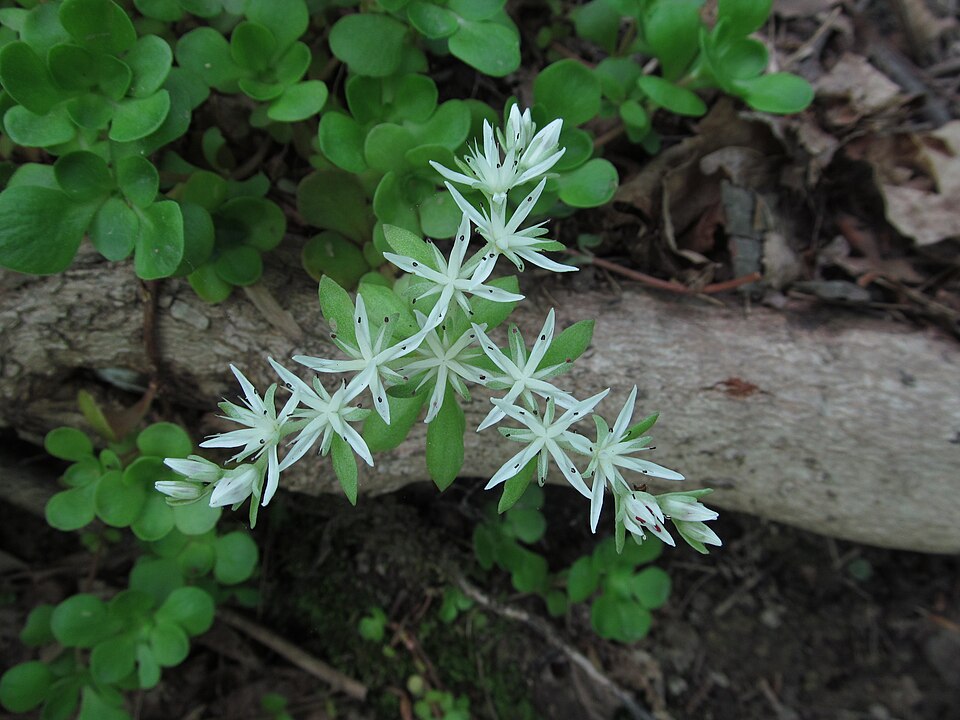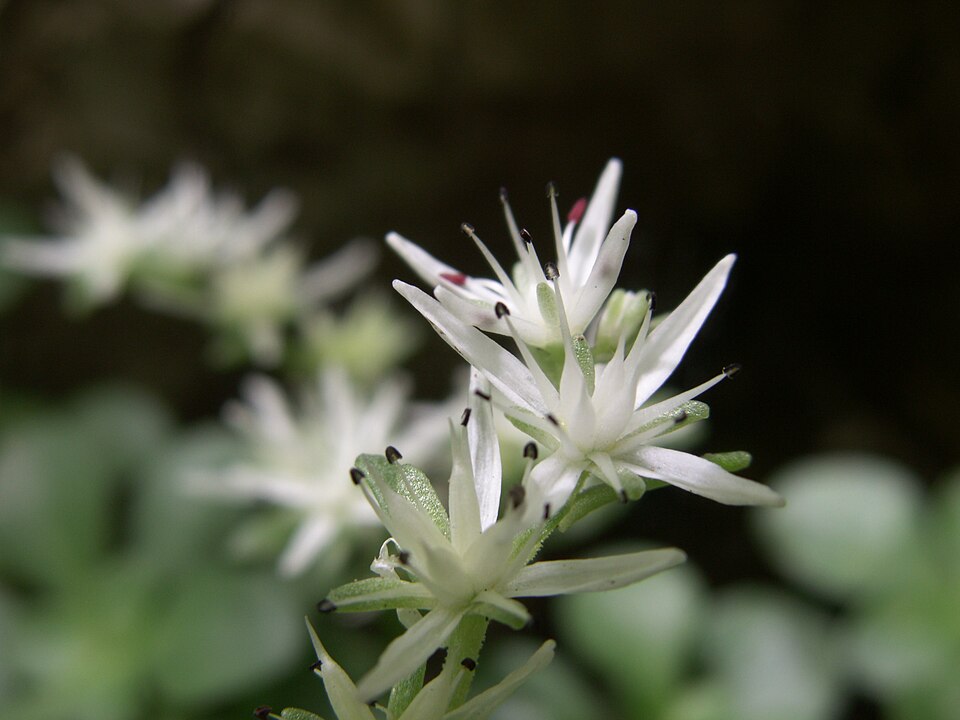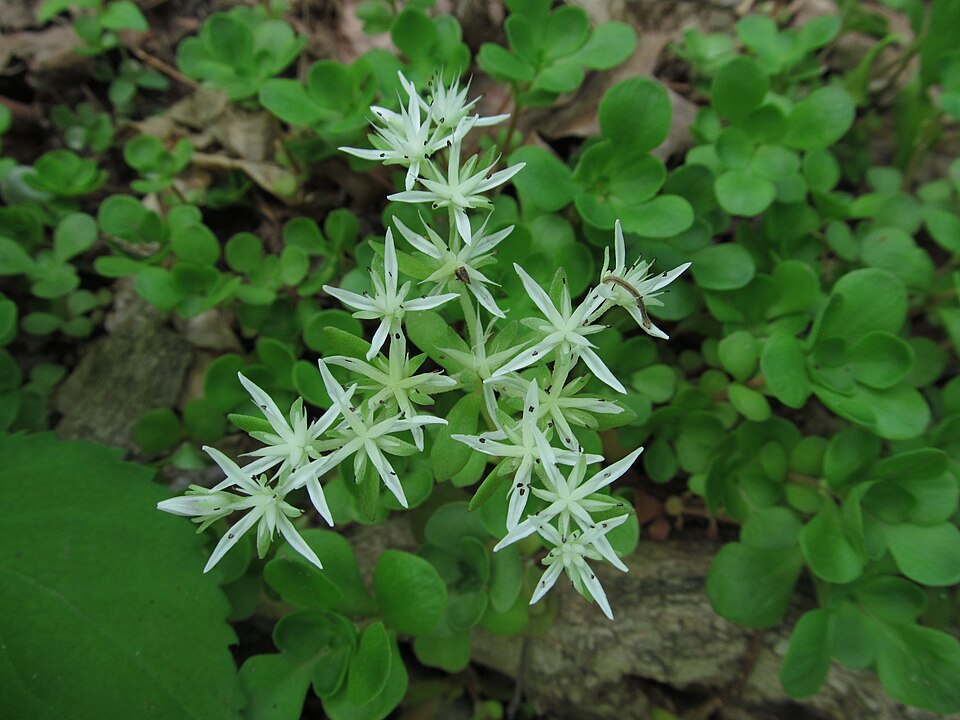
Blooming in the Kane Woods Nature Area in Scott Township, where it grows abundantly on the wooded slopes.

For a description of the species, see the Sedum ternatum reference page.



Comments

Blooming in the Kane Woods Nature Area in Scott Township, where it grows abundantly on the wooded slopes.

For a description of the species, see the Sedum ternatum reference page.





A beautiful native succulent that loves rocky wooded hillsides, which it finds in abundance around Pittsburgh. The pictures above were taken in the Kane Woods Nature Area, Scott Township; the ones below in Fox Chapel.


For a description of the species, see the Sedum ternatum reference page.

The USDA PLANTS Database does not record this species as wild in Allegheny County, but there are a lot of things the USDA doesn’t know. There was a substantial patch here in the Allegheny Cemetery, obviously not planted deliberately, though it may well be descended from White Stonecrop planted elsewhere in the cemetery.
Like our other species of Sedum, this one is a low succulent plant with starry flowers. It is easily distinguished from Goldmoss (Sedum sarmentosum) by its white flowers held aloft in clusters on stems well above the plant. Wild Stonecrop (Sedum ternatum) also has white flowers, but in arching branches intermingled with leaves rather than in clusters above the plant.
This plant was not well established enough in Gray’s time to make it into his Manual, but our description here should make it easy enough to identify.

Also known as Stringy Stonecrop or Wild Stonecrop (a name it shares with Sedum ternatum), this little succulent really likes city yards where the soil is a bit dry. But it can seed itself anywhere and grows very fast: this plant grew up in a nursery pot with a Korean lilac, and by the end of May was covered with starry yellow flowers. Often planted as a groundcover; it can be invasive, but its shallow roots make it very easy to yank out if you don’t like it.
This species was introduced from Asia after Gray’s time as a rock-garden specialty, but apparently Pittsburgh is very much to its liking. It does not appear in Gray’s Manual.
An attractive native Sedum that likes rocky hillsides in open woods. This one grew on a small stone outcropping on a wooded hillside in Mount Lebanon, where it was blooming in the middle of May.
Gray describes the genus and the species:
SEDUM [Tourn.] L. STONECROP. ORPINE
Calyx-lobes and petals 4-5. Stamens 8-10. Follicles many-seeded; a little scale at the base of each. Chiefly perennial smooth and thick-leaved herbs, with cymose or one-sided inflorescence. Petals almost always narrow and acute or pointed. (Name from sedere, to sit, alluding to the manner in which these plants fix themselves upon rocks and walls .)
S. ternatum Michx. Stems spreading, 7-15 cm. high ; leaves flat, the lower whorled in threes, wedge-obovate, the upper scattered, oblong; cyme 3-spiked, leafy; petals white. Rocky woods, Ct. to Ga., w. to Mich., Ind., and Tenn. May.